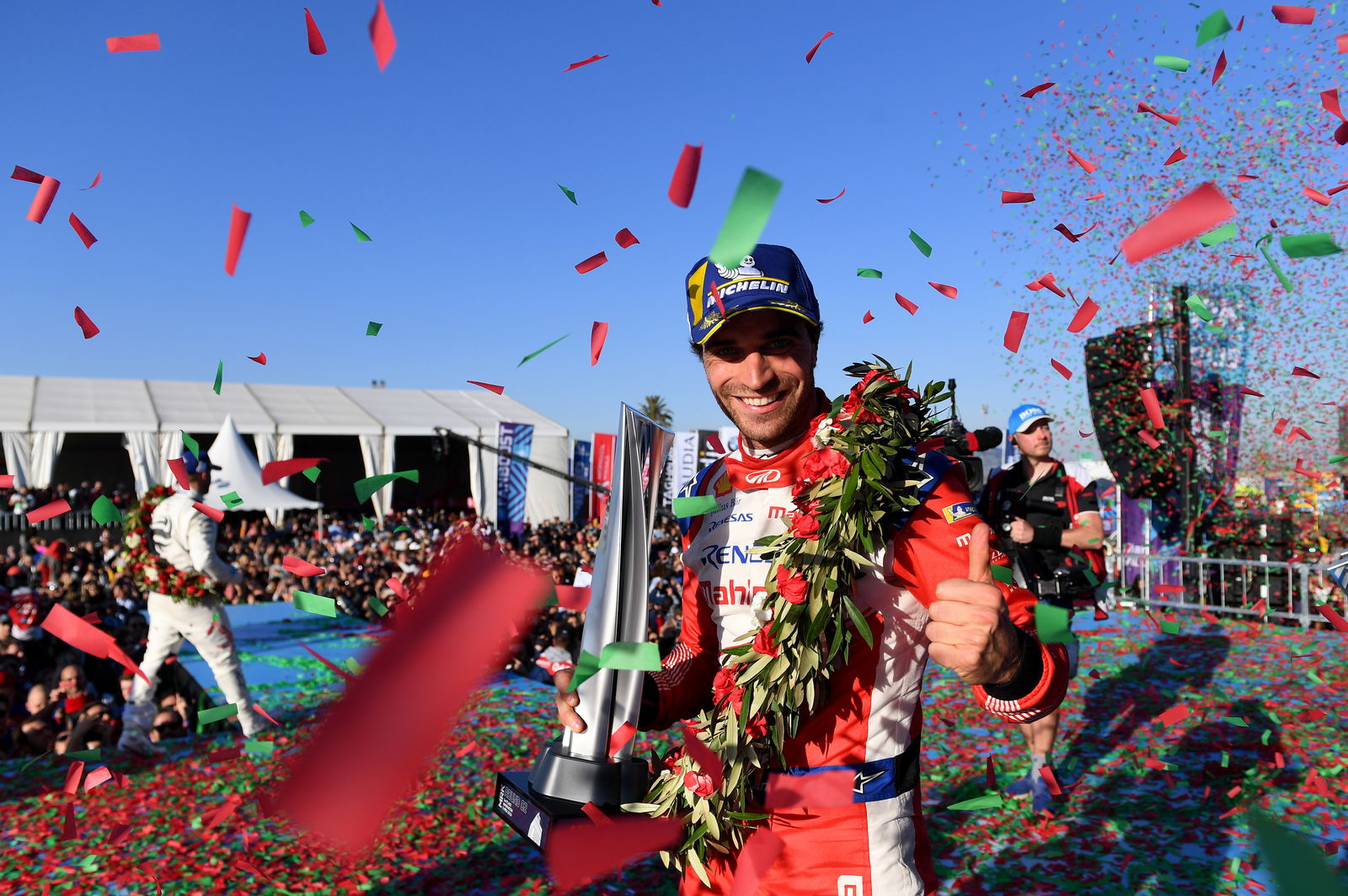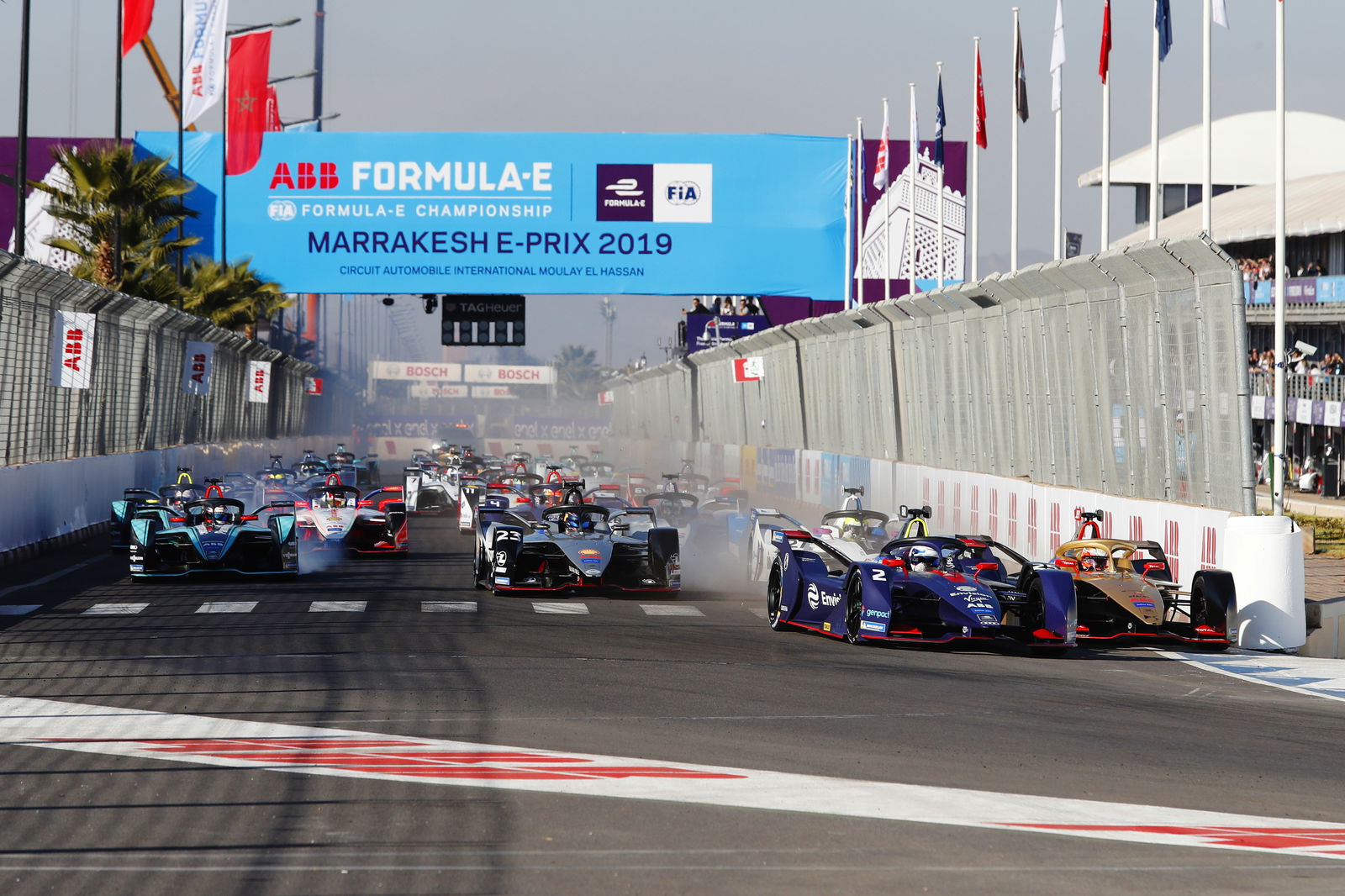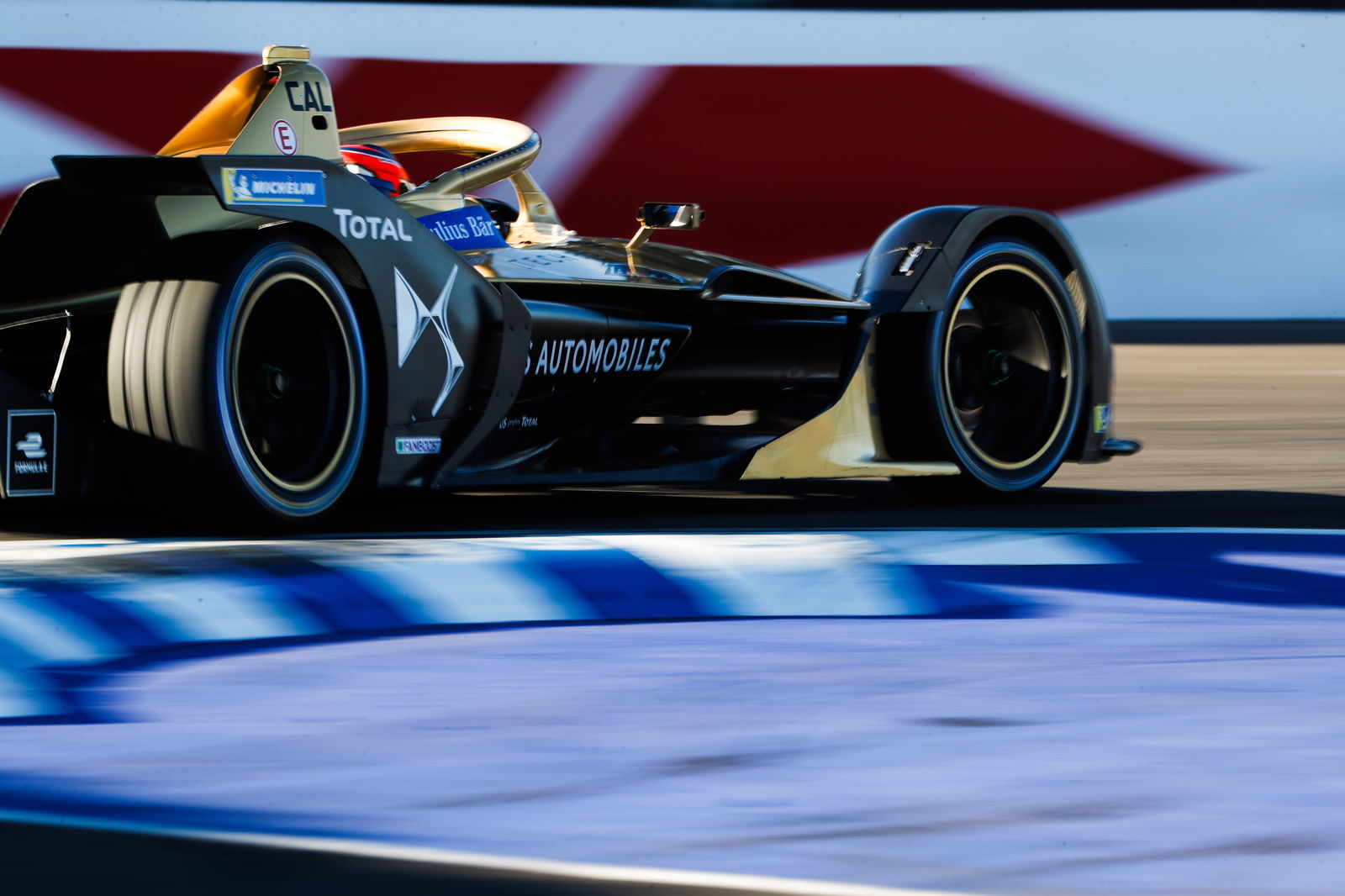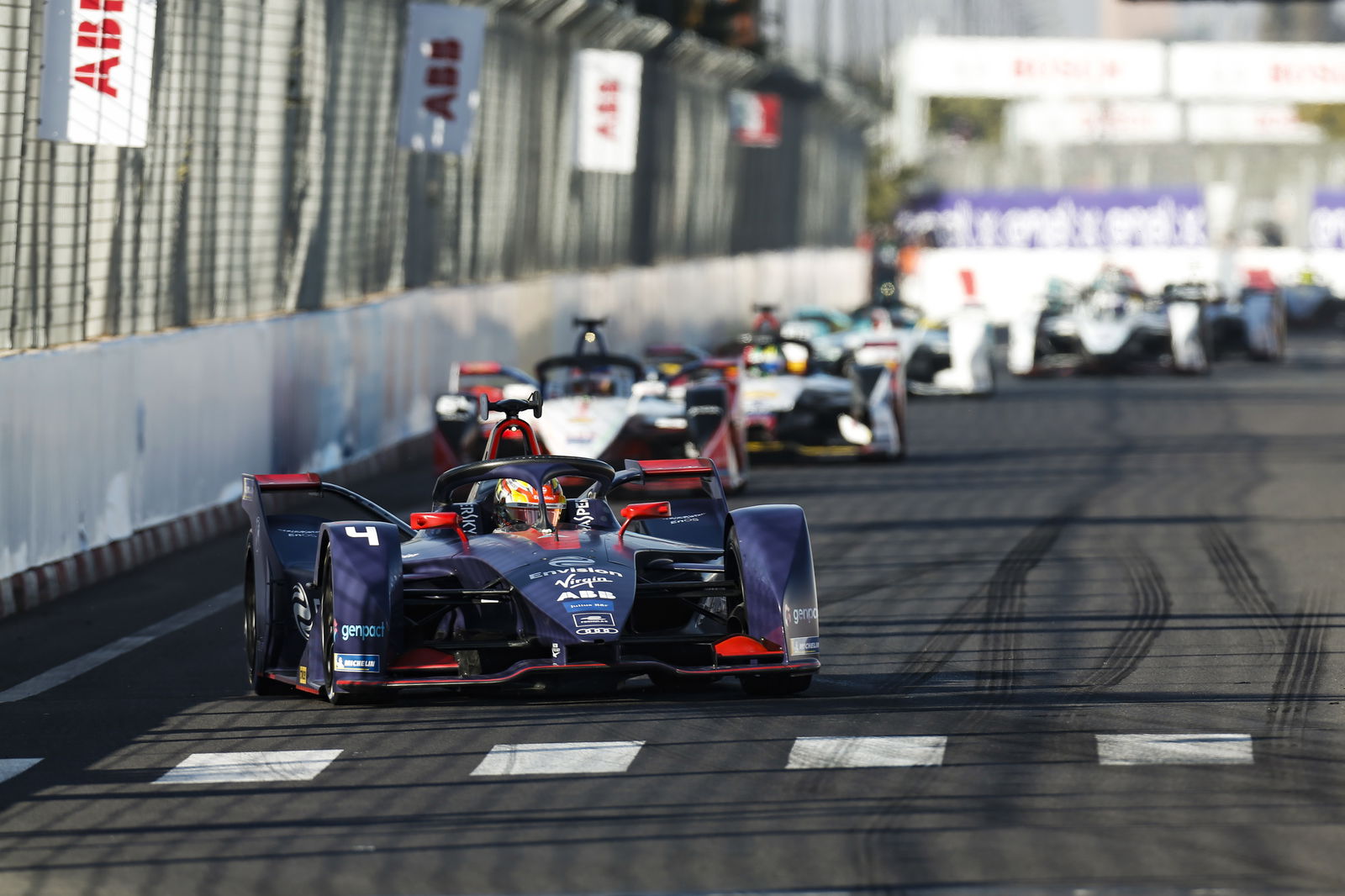How Formula E’s Gen2 era is already delivering serious promise
Having missed tuning in to Formula E’s Season 5 opener in Saudi Arabia last month as part of the post Formula 1 season wind-down, Saturday’s Marrakesh E-Prix was my first taste of the all-electric series’ Gen2 era – and boy, did it deliver.
Like many observers, I was curious to see how not only the new cars would perform over a full race weekend, but also how the new race format would operate. While borne out of necessity, the car swaps had been one of the biggest flashpoints of each race through the opening five seasons, often acting as the make or break moment.

Having missed tuning in to Formula E’s Season 5 opener in Saudi Arabia last month as part of the post Formula 1 season wind-down, Saturday’s Marrakesh E-Prix was my first taste of the all-electric series’ Gen2 era – and boy, did it deliver.
Like many observers, I was curious to see how not only the new cars would perform over a full race weekend, but also how the new race format would operate. While borne out of necessity, the car swaps had been one of the biggest flashpoints of each race through the opening five seasons, often acting as the make or break moment.
A lights-to-flag race without any pit stops on tyres with little-to-no degradation and a similar approach to power management throughout the field was a concerning prospect. Formula E’s answer was ‘Attack Mode’, dubbed as a ‘Mario Kart’ format, whereby passing over a certain part of the track would give them a power advantage for a period of time.
A bit gimmicky? Perhaps, akin to F1’s use of DRS – but Marrakesh proved just how well Attack Mode can work, playing a key part in the strategy of each race.
To trigger Attack Mode, drivers were required to pass over two white lines placed on the outside of Turn 3, running way off the racing line. Doing so would cost around a second, risking a loss of position. But in return, the maximum power of the car increases from 225 kW to 250 kW, offering a serious pace advantage.
Fears heading into the season among drivers were that Attack Mode would be something they’d do because they had to opposed to offering a genuine performance advantage. But in both Ad Diriyah and, more evidently in Marrakesh, we have seen just how well it can work.
Jerome d’Ambrosio’s charge to victory may have come with a big slice of fortune in the form of the clash between BMW teammates Antonio Felix da Costa and Alexander Sims, yet it was in the middle of the race where he made the moves crucial to his third Formula E victory.
Running P5 early on, the Mahindra driver made key passes on Lucas di Grassi, Robin Frijns and Sam Bird to put himself third behind the BMWs, all without using his first of two Attack Mode usages too early.
Even more crucial was how d’Ambrosio kept di Grassi back when the Audi driver armed Attack Mode, preventing him from making necessary progress. This in turn left di Grassi in the clutches of both Envision Virgin drivers when they ran Attack Mode, allowing Frijns and Bird to ease past.
D’Ambrosio bided his time well, being one of the final drivers to use Attack Mode for the first time on Lap 24 as defence to keep Frijns back. It also gave him the chance to carve into the five-second gap that had emerged at the front after the BMWs ran Attack Mode in tandem, cutting the margin down to just one second – pressure that forced Sims to try and pass da Costa, triggering their collision and the late Safety Car.
D’Ambrosio’s decision to save his final use of Attack Mode until late in the race paid off, allowing him to keep Frijns back in the last-lap dash to the chequered flag and secure a canny, opportunistic victory.

The spirited celebrations from both d’Ambrosio and team principal Dilbagh Gill proved just how much of a shock the win was to Mahindra. It clearly isn’t the fastest team – yet it had managed to upstage its bigger and better-funded rivals in style.
Suprises like this are what make Formula E so fascinating to watch. Sure, spec series are always going to offer more unpredictability and closer competition, but the use of Attack Mode in particular has given drivers the chance to properly shape their races. Who knows - maybe the concept could even extend to other series in the future?
Fears about the loss of the car swaps removing any kind of unpredictability from races have been swiftly allayed. Hopefully, this can be the catalyst for Formula E to expand its fanbase further and attract more ‘purists’ to tune in to the championship.
Beyond the format, the early signs are that we could have a close title fight shaping up, with BMW and Techeetah being the early pace-setters through Season 5.
Jean-Eric Vergne was left ruing a penalty in Ad Diriyah as he fell narrowly short of passing BMW’s da Costa in the closing stages of the season opener, and looked in contention once again in Marrakesh before a clumsy attempt to pass Sam Bird at Turn 1 sent him into a spin and way down the order.
The fact Vergne was able to fight from the back to finish fifth and run just five seconds shy of d’Ambrosio prior to the Safety Car being called proved Techeetah still has one of the fastest packages going in Formula E.

BMW will look at Marrakesh as being a big opportunity missed, and one that could come back to bite at the end of the season. The team had a one-two within its grasp, controlling the race with da Costa and Sims out front, only for miscommunication – something that also blighted the Andretti operation in previous seasons – to prove costly. Da Costa’s downcast figure staring through the catch-fencing as the race continued spoke volumes.
It’s unlikely to be a two-horse race at the front of the pack, though. Mahindra has made an excellent start to the year, with d’Ambrosio’s teammate, Pascal Wehrlein, qualifying well on debut before crash damage eliminated him on the first lap. Nissan e.dams remains competitive in the hands of Sebastien Buemi, while Audi proved last season just how strong it can be once it finds its feet. The field is opening nicely.
It may be early days, but Formula E’s Gen2 era is shaping up very well indeed. Long may that continue.

